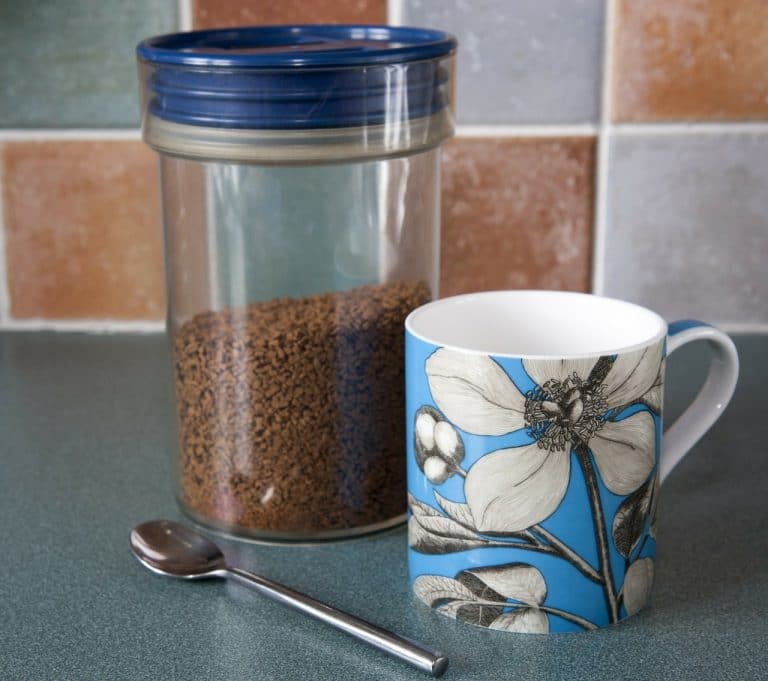Host a Coffee Tasting Party with these Cupping Tips
We’ve all heard about wine tasting parties but have you heard of the new trend spreading across North America like a wild fire? Cupping is to gourmet coffee aficionados as wine tasting is to wine lovers. In this post we’re going to take a detailed look at what “Cupping” is and how you can properly host a gourmet coffee tasting party in your own home!
What is a Coffee Cupping and a Tasting Party?
It started as a way for boutique coffee houses to draw attention to their unique coffee blends in Europe, and now it has gone viral as an entertaining venue in coffee houses around the world and in gourmet coffee lover’s homes. It is the Gourmet Coffee Tasting Party, or as insiders have dubbed it: “Cupping”.
Coffee Cupping for the Beginner
If you have never been part of a coffee tasting event, then there are a few things you’ll need to know before you host your Cupping Party. This is not just a few friends gathering to sip on a good cup of coffee and chit-chat – it is an event of refinement. Cupping has become an art as extensive in understanding as proper Wine Tasting. During your coffee tasting, you are going to discover and develop useful ways to compare and contrast the various taste sensations that coffee evokes. The following are most common characteristic landmarks used:
Acidity:
In coffee taster terms, acidity has nothing to do with the burning sensation you get with acid reflux, instead, acidity to coffee is what dryness is to wine. Coffee acidity may be described as bright, clear, snappy, dry, winey, and fruity. Some African blends are described with wine-like high notes, whereas coffees from the Americas are often described with a crisp clear note of acidity. Unpleasant acidity often registers as sourness.
Body:
The body of coffee is the sense of weight that the coffee exerts on the mouth, and is sometimes very difficult for beginners to identify. It is sometimes useful to think about the thickness you feel on your palate and the physical presence the coffee leaves.
Sweetness:
The sweetness of a coffee often defines a great coffee from a good coffee. Intensely acidic coffees become incredibly refreshing if there is enough sweetness to provide a balance. A good reference is lemonade: start with lemon juice and water, then add sugar until the level of sweetness balances with the tart citric flavour. It is the same with coffee, the natural sweetness is critical to allow the subtle flavours to flourish and be appreciated
Finish:
The finish is the aftertaste and is often the most powerful factor in the overall quality of the coffee tasting experience. It is what will linger long after the coffee has been swallowed. A good finish is one that lingers 10-15 seconds after swallowing with the principal flavour of the coffee.
Gather Your Guests with Coffee Tasting Party Invitations!
As a novice, you aren’t going to enjoy the process if you plan a coffee tasting party as much as you may a spring BBQ you are more comfortable with hosting. Limit your guest list to 4 to 6 participants. Make it a special event and send out invitations with RSVP provisions – that way you’ll know how many to plan for. Give special thought to who will enjoy the process then decide on a coffee theme. Check out all the Coffee Tasting Party ideas on Pinterest!
Keep your coffee sampling simple.
Just as with wine tasting, there are coffee tasting protocol and tools. The party planning all begins with a sampling of at least 4 flavours. Have fun with your Coffee Tasting theme to make your coffee cupping versatile. Why not try one of these themes?
- Coffees from a specific region in the world, such as Africa or South America.
- Coffees from a sampling of regions around the world.
- Fair trade or organic coffee
- Gourmet coffee blends from any number of countries around the world.
- Flavored coffees
The key is to finding a coffee roaster who will roast the coffee right before it arrives in your home – like us! With That’s Coffee you can put together the perfect sampler packs and you are ready to let the Cupping begin.
Coffee Cupping Form
The art of cupping is a social and recording event. The first few times you hold a coffee tasting party or a cupping, it is recommended that there is no discussion started until after the “cupping’ is complete. Cupping forms allow the participants to note their take on the coffee sampled. You can download a cupping form online, or you can create your own with the qualities to be examined and the definitions, such as:
|
Acidity: In coffee taster terms, acidity has nothing to do with the burning sensation you get with acid reflux, instead, acidity to coffee is what dryness is to wine. Coffee acidity may be described as bright, clear, snappy, dry, winey, and fruity. Some African blends are described with wine-like high notes, whereas coffees from the Americas are often described with a crisp clear note of acidity. Unpleasant acidity often registers as sourness |
Notes & Score |
|
Body The body of coffee is the sense of weight that the coffee exerts on the mouth, and is sometimes very difficult for beginners to identify. It is sometimes useful to think about the thickness you feel on your palate and the physical presence the coffee leaves.
|
Notes & Score |
|
Sweetness The sweetness of a coffee often defines a great coffee from a good coffee. Intensely acidic coffees become incredibly refreshing if there is enough sweetness to provide a balance. A good reference is lemonade: start with lemon juice and water, then add sugar until the level of sweetness balances with the tart citric flavour. It is the same with coffee, the natural sweetness is critical to allow the subtle flavours to flourish and be appreciated |
Notes & Score |
|
Finish The finish is the aftertaste and is often the most powerful factor in the overall quality of the coffee tasting experience. It is what will linger long after the coffee is swallowed. A good finish is one that lingers 10-15 seconds after swallowing maintaining the principal flavour of the coffee.
|
Notes & Score |
You will need 1 cupping form for each coffee sample times the number of guests attending. For example, if you have 4 coffees to sample and 4 guests you will need to print 12 cupping forms.
Tools Needed for Your Coffee Cupping Party
Other supplies you will need include:
- 8 5-7 ounce glasses or cups (for tasting the coffee)
- 64 ounce water kettle
- Coffee grinder
- Two pint glasses (for rinsing cupping spoons)
- 4 cupping spoons (there are special cupping spoons available but a tablespoon measure works quite well. Deep bowl tablespoons with a concave bottom work best).
- Gram scale (for measuring coffee to precision, a measuring scoop can work as well)
- 4 empty mugs (cupping involves sloshing, slurping and spitting. This gives your guests their own spittoon).
Let the Coffee Tasting Begin!
You are going to want an area that allows your guests ample area to move around the samples and to write down their comments. Perhaps you have a large kitchen island that would be ideal with plug ins for the kettle and grinder. If not, many have had great success at the dining room table. Set up all your tools – Lay you’re One –two tasting cups per coffee sample, cupping spoons, spittoon mugs and cupping forms beside each coffee sample.
Official Cupping Process Protocol and Tips
Label the bottom of each tasting cup with the sample coffee. Measure coffee beans into their tasting glass – for a starting point we recommend 12 grams coffee to 6.5 oz. boiling water (filtered water is always the best)
- Start your kettle so that the water boils close to when your grinding is complete
- Grind your samples – simply dump your measured beans from the tasting cup into the grinder. Grind completely, then pour all grinds back into the tasting cup (make sure to brush out grinding chamber and completely empty container between each sampling) While waiting for the kettle to come to a boil it is a great time to sniff and evaluate the fresh ground qualities of each sample.
- Once the water is boiling let it stand for 25 seconds before pouring. The ideal pouring temperature is 202F. Pour over each ground sample from the first grind to the last (the oldest get the water first)
- Pour slowly while making sure all that coffee grounds are completely saturated. Avoid dry clumps on top of the coffee.
- Once you start your pouring, mark the time or start a timer. Pro-cuppers allow a 4 minute for the grounds to begin settling.
- Now it’s time for the fun to begin. You are about to “Break the Crust” so get your face close to the cup, because in the four minutes that the coffee and water have had to interact, a thick crust should have formed on the top of the tasting cup.
- Take your cupping spoon, place it horizontally to your face near the forward lip, and puncture the crust and drag it to the back portion of the cup. As you break the crust inhale the aromas that fill the air.
- Repeat this for each sample. Allow everyone the chance to break the crust on at least one sample As you move quickly through each sample, your other guests can go back an rebreak the crust for their own evaluations.
- Once the crust ritual is done it is time to skim off the remaining top grounds. Pro cuppers use two spoons at the back of the cup, then drag them forward around the edges to meet at the front. They then scoop taking out just the grounds, leaving as much liquid as possible.
- Begin tasting the coffee. Take a spoonful and slurp it into your mouth while gently inhaling. The goal is to have the coffee coat your entire tongue while the inhalation allows the aromatic elements to exert their full effect on your taste buds.
- Always rinse your spoon in the water filled pint glasses between each tasting. Avoid cross-contamination of the samples
- Try each sample, then try them again as they cool down. You want to see how the coffees fare at different stages of cooling. Don’t be overly influenced by how the coffees taste – this will come with time.
- It is perfectly acceptable to spit out your slurps as you go, but to finish the tastings you should swallow the samples to evaluate the aftertaste and finish.
- Guests should be making notes on their cupping forms throughout the process.
- Congratulations, now it is time for the discussion and ratings to begin! Discuss, argue, debate and share what you have all noticed. Some will agree, but describe in different terms, some will completely disagree on the coffee overall value.
- Vote or tally the overall scores and make the winning sampler into a pot of coffee that you can all sit back, relax and enjoy.
Want to get started? Check our out gourmet coffee sample packs and pick one for your first coffee tasting party!




